Honored to be named by World Travel Awards as the “Top Emerging Travel Destination in Asia,” Ha Giang is increasingly attracting tourists both domestically and internationally. Let’s explore the pristine beauty, grandeur, and unforgettable Ha Giang travel experiences with Ha Giang City Hostel through the article below!
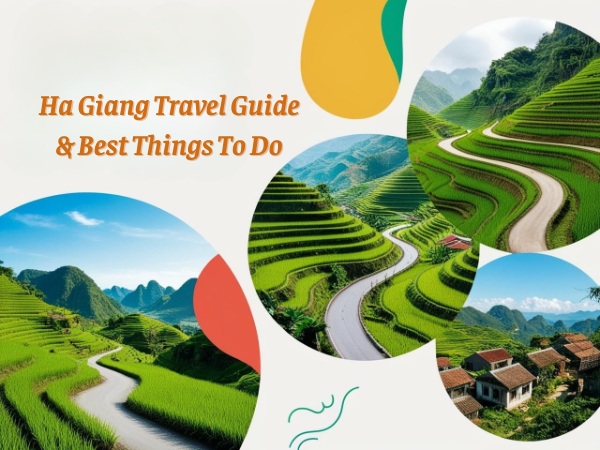
Ha Giang travel guide & best things to do
General information about location and topography of Ha Giang
Located in the northernmost part of Vietnam, Ha Giang has rugged terrain with mountainous landscapes that create a rare and magnificent natural scenery. To the east, it borders Cao Bang province; to the west, it borders Yen Bai and Lao Cai provinces; to the south, it borders Tuyen Quang province; and to the north, it shares a border with China. Ha Giang plays a key role both geographically and culturally in Vietnam’s history.
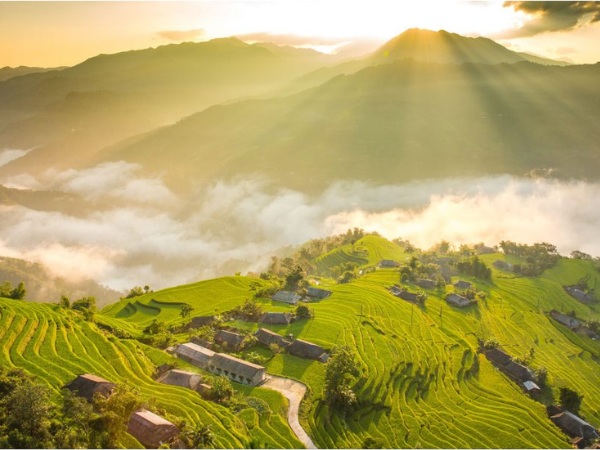
Ha Giang’s terrain is mainly high mountains
With an average elevation ranging from 800m to 1,200m above sea level, Ha Giang’s terrain is mainly high mountains, with 49 peaks reaching altitudes between 500m and 2,500m. The winding mountain passes, winding roads, and misty valleys create an irresistible appeal for adventure enthusiasts.
Not only famous for its majestic natural scenery, Ha Giang is also a land rich in heritage values. This area preserves a precious geological heritage system and is a cultural treasure trove of various ethnic minorities. In recent years, Ha Giang travel has focused on sustainable tourism development, closely tied to the preservation and promotion of local cultural identities.
The ideal time to travel to Ha Giang
No matter when you embark on your Ha Giang travel journey, you’ll be amazed by its stunning landscapes. Ha Giang has a cooler climate compared to the neighboring midland and delta areas. The average annual temperature ranges from 21°C to 23°C, characterized by high humidity, significant rainfall, and extended rainy periods.
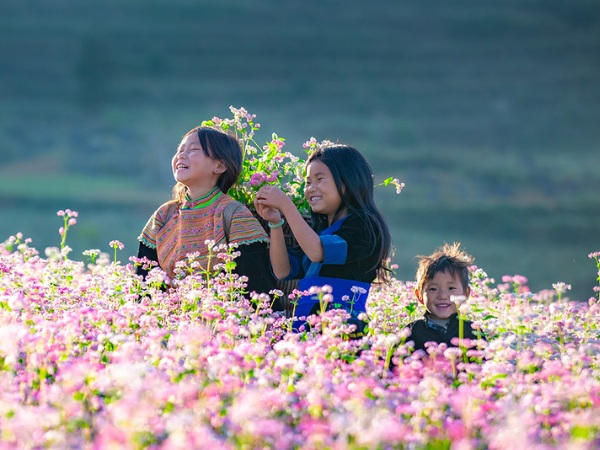
Ha Giang boasts a captivating beauty
From October to November, the rocky plateau is adorned with the vibrant pinkish purple color of buckwheat flowers. From December to the Lunar New Year, fields of yellow mustard flowers bloom, creating a picturesque scene. In February and March, peach and plum blossoms bloom, signaling the arrival of spring to the villages.
During the summer months from May to July, Ha Giang often experiences sudden showers, which enhance the raw and majestic beauty of its mountains and forests. In August and September, the rice season arrives, with terraced fields gradually transitioning from green to golden. The scent of ripe rice mingles with the natural landscape, creating a peaceful rural picture.
How to get to Ha Giang from Hanoi?
Traveling from Hanoi to Ha Giang is quite convenient with several transportation options. As a popular Ha Giang travel route, daily buses depart continuously from major bus stations such as My Dinh, and Gia Lam, catering to the transportation needs of tourists.
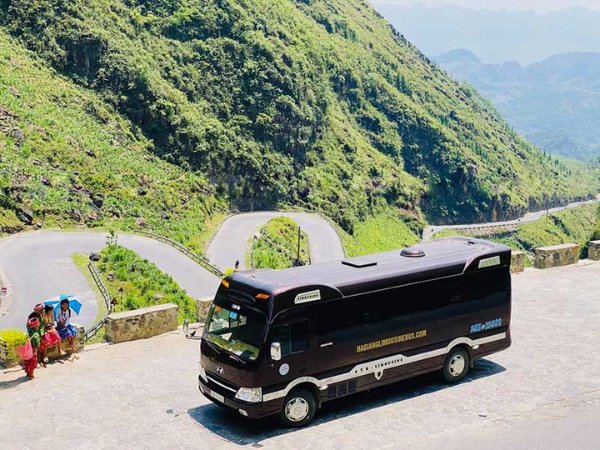
Traveling to Ha Giang by bus
Passengers can choose between sleeper buses or high-quality limousine buses, depending on their budget. To save time and ensure comfort for the exploration journey, many tourists prefer night buses. Ticket prices from Hanoi to Ha Giang range from about 350,000 VND per trip, depending on the type of bus and the time of booking.
Attractions to visit in Ha Giang
When experiencing Ha Giang travel, tourists will be amazed by majestic rocky plateaus, vibrant flower valleys, and peaceful ethnic minority villages.
Ma Pi Leng Pass
Ma Pi Leng is known as the “king” of the mountain passes in the Northwest region, famous for its winding roads. The pass stretches approximately 20km, located on the Happiness Road, connecting the communes of Pa Vi, Pai Lung (Meo Vac District), and Ta Lung (Dong Van District). This route not only challenges drivers but also offers the opportunity to admire peaceful villages such as Pa Vi, Sin Cai, and many other famous landmarks.
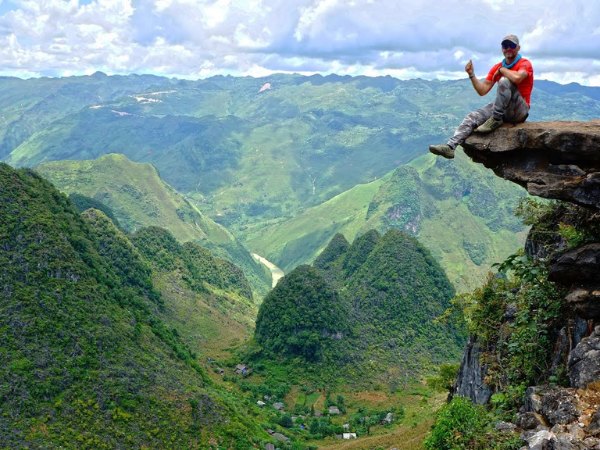
Ma Pi Leng is often hailed as the ‘king’ of mountain passes in the Northwest region
Dong Van Karst Plateau Geopark
The Dong Van Stone Plateau is recognized by UNESCO as a Global Geopark, home to nearly 140 geological heritage sites, including landscapes, fossils, and limestone caves. This area also features a unique mountain ecosystem with rare plant species and wildlife such as monkeys, deer, and wild goats. Besides its geological value, Dong Van is also a region that preserves the unique cultural identity of 17 ethnic groups.
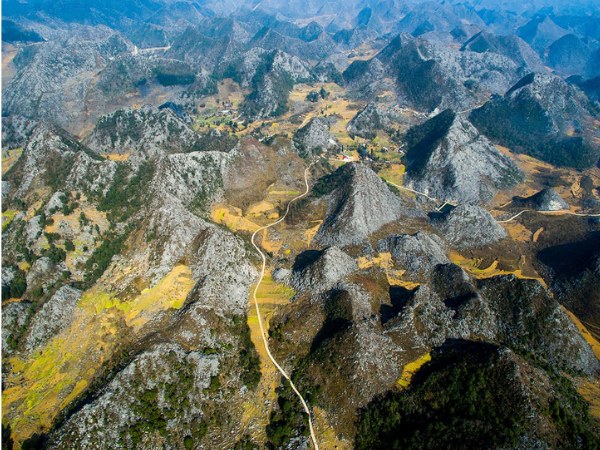
View of Dong Van Karst Plateau Geopark from above
Nho Que River
The Nho Que River originates from the Nghiem Son Mountain range (Yunnan, China) and flows northwest. The river spans 192km, of which 46km is within Vietnamese territory. It lies nestled under the majestic Ma Pi Leng Pass, with emerald green waters flowing year-round, creating a rare and picturesque scene that is hard to find elsewhere.
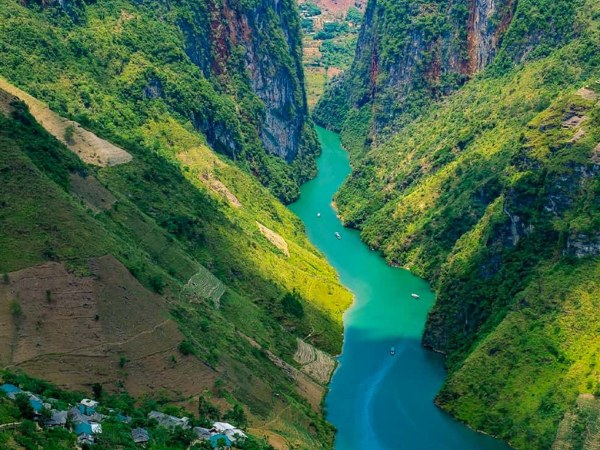
The Nho Que River originates from the Nghiem Son Mountain range
Dong Van Market
Built from 1925 to 1928, Dong Van Market features unique Vietnamese-Chinese architecture with a U-shaped structure to facilitate trade. Located in the heart of the rocky plateau, the market is not only a commercial hub but also reflects the culture of the local mountain communities. Visitors can immerse themselves in the lively atmosphere, observe the simple lifestyle of locals, and enjoy delicious specialties of the region.
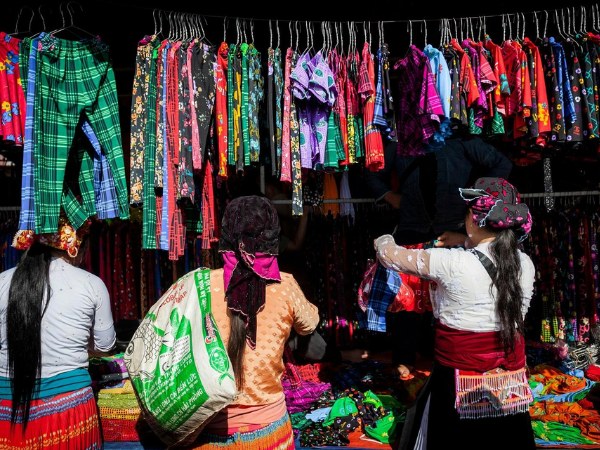
The scene at Dong Van market
Lung Cu Flag Tower
After climbing over 800 steps, you will be proud to witness the Lung Cu Flagpole, with its unique octagonal architecture. The Lung Cu Flagpole is a sacred symbol marking the northernmost point of Vietnam. It is not only a source of pride for the local people but also a popular destination for many tourists, especially young people who love exploration.
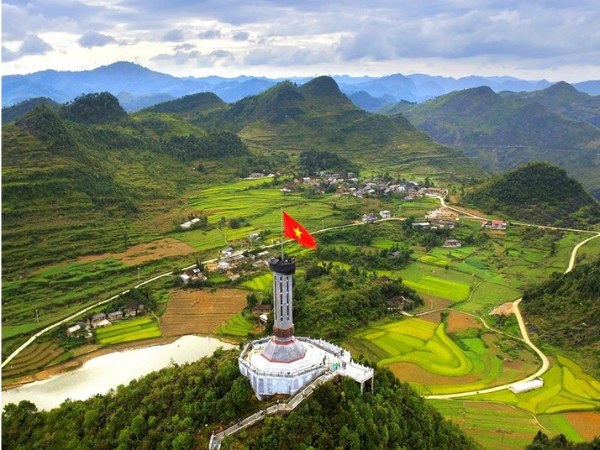
The Lung Cu Flagpole is a sacred symbol of Vietnam’s northernmost point
Quan Ba Heaven Gate
Located at an altitude of 1,500m, Quan Ba Heaven’s Gate is the first gateway in the journey to explore the Dong Van Stone Plateau. The road to the Heaven’s Gate is quite steep and treacherous, so tourists should choose days with good weather for the visit. August to September is considered the most ideal time as the weather is dry, with little fog, and golden sunlight paints the ripened rice fields.
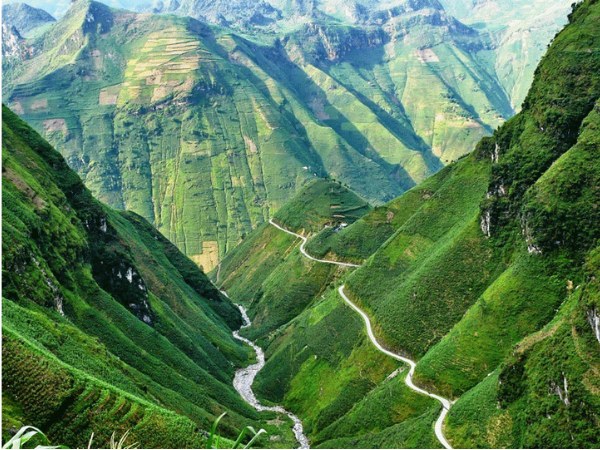
Quan Ba Heaven’s Gate is the first gateway to the Dong Van Stone Plateau
The mansion of the Vuong Family
Construction of the Vuong Family Mansion began in 1898 and was completed in 1907, costing around 150 billion VND today. The mansion spans over 1,200m² on a 3,000m² plot, built by artisans from Yunnan (China) and the Mong people. With its unique architecture and historical value, the mansion has become a cultural symbol of the highlands. In 1993, the Ministry of Culture, Sports, and Tourism officially recognized the mansion as a national heritage site, marking nearly a century of existence.
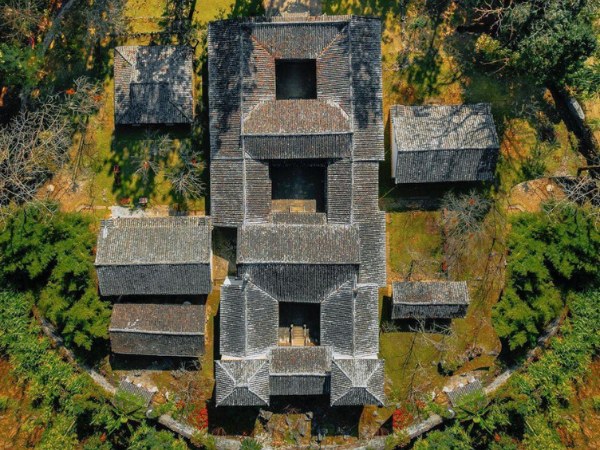
The mansion of the Vuong Family
What to eat in Ha Giang?
When traveling to Ha Giang, local cuisine is something you must try in any Ha Giang travel experience.
- Ha Giang Rice Cake: The rice cake is made from rice flour, rolled thinly, and steamed. Inside is minced meat mixed with wood ear mushrooms, creating a fragrant and chewy cake full of flavor.
- Au Tau Porridge: Made from bone broth, yellow flower glutinous rice, and Au Tau tuber mashed, this porridge has a delightful aroma of chicken eggs and herbs. It’s not only tasty but also nutritious, helping to cure colds and relieve body aches.
- Thang Co: Thang Co is a traditional Mong soup made from horse meat and a broth boiled from bones and internal organs. The soup is highlighted by the rich flavor of 12 spices such as star anise, cardamom, and lime leaves.
- Five-Colored Glutinous Rice: The colors of this rice dish are extracted from natural plants, symbolizing the five elements in Vietnamese beliefs: yellow (earth), green (wood), red (fire), white (metal), and black (water). This dish is an indispensable part of festivals, reflecting the cultural identity of the ethnic people.
- Buckwheat Cake: Made from finely ground buckwheat flour, mixed with water, and poured into soft molds, the taste of this cake is distinct and cannot be confused with any other type.
- Gou Cake: This is a dish from the Dao people in Ha Giang. The cake is made from glutinous rice, green beans, black pork, and galangal leaves. After being wrapped, it is boiled for 8-10 hours over a traditional wood stove.
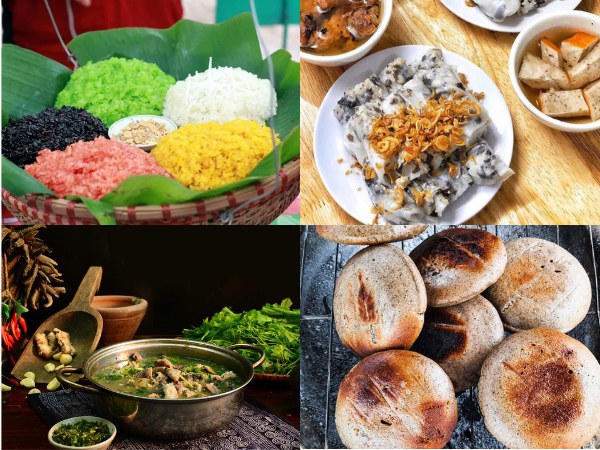
Cuisine in Hanoi is wonderfully diverse, showcasing a rich variety of flavors
Accommodations in Ha Giang
If you are looking for a comfortable and affordable place to stay in Ha Giang, Ha Giang City Hostel is a great option. All rooms here are modernly designed, equipped with wardrobes, comfortable beds, and spacious spaces. Private bathrooms come with showers and free toiletries, ensuring a convenient stay for guests.
Depending on your needs and the number of people, you can choose from the following four types of rooms:
- Twin Room: Two single beds, suitable for groups of friends traveling together.
- Double Room: A double bed, perfect for couples or small families.
- Triple Room: Three beds for groups of friends or small families, ensuring comfort for every member.
- Dorm Room: A shared room with bunk beds, ideal for backpackers or those who wish to meet new people.
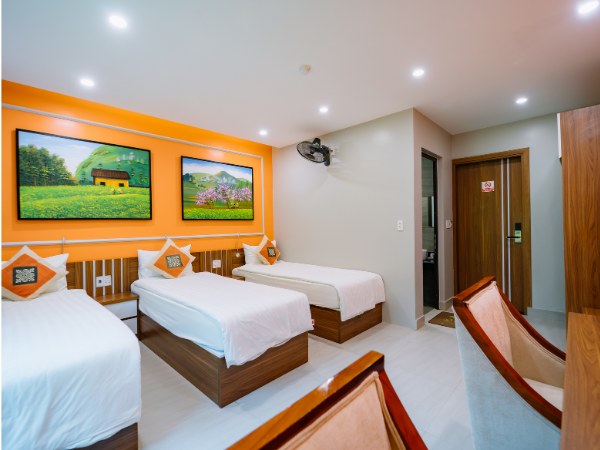
Ha Giang City Hostel offers a wide range of room types to suit every traveler’s needs
How to get around
Motorbikes are a popular choice for tourists to explore Ha Giang travel, especially for those who enjoy the thrill of conquering majestic passes like Ma Pi Leng, Bac Sum, or Tham Ma. Motorbike rental services are widely available in the city, with prices ranging from 150,000 VND to 300,000 VND per day, depending on whether it’s a manual or automatic bike. Some stores also provide helmets, raincoats, and free maps to support tourists.
If you don’t have enough time or prefer not to drive yourself, you can hire a 7 to 16-seater car service. This is an ideal choice for groups with elderly people, children, or those who want a safer journey. Local drivers know the roads well, ensuring a smooth trip even on difficult routes. Car rental prices vary depending on the itinerary and type of car rented.
Some tips before you travel to Ha Giang
Before embarking on your Ha Giang travel adventure, it’s important to prepare thoroughly for a fulfilling trip. Here are some key tips to help you enjoy your journey more safely.
- Make a detailed plan: Define your itinerary, destinations, and mode of transportation in advance to optimize your time. Hà Giang has many beautiful routes, but traveling between locations can take time.
- Respect local culture: Hà Giang is home to many ethnic minorities, each with its own customs and traditions. When communicating, taking photos, or visiting villages, you should ask for permission and show respect.
- Prepare suitable clothing: The weather in Hà Giang changes throughout the day. Even in summer, early mornings and late nights can be quite cold, so bring warm clothes to stay comfortable.
- Be aware of road conditions: Hà Giang’s terrain is mostly mountainous, with winding roads and steep slopes. If you’re not accustomed to riding a motorbike on such terrain, consider renting a vehicle with a driver for safety.
- Choose a reputable tour operator: If it’s your first time in Hà Giang or you want to explore its culture and nature in more depth, you can sign up for a tour from a trusted provider like Ha Giang City Hostel, where experienced guides will help ensure you have the best experience.
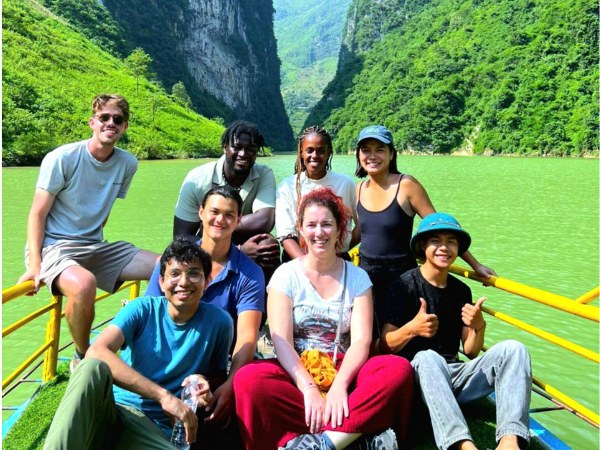
Experience the beauty of Ha Giang through a tour with Ha Giang City Hostel
Through the Ha Giang travel journey, you will not only have the chance to conquer the majestic nature but also immerse yourself in the traditional beauty and rich culture of the local people. Don’t forget to book your tour at Ha Giang City Hostel, which offers quality accommodation and tour services, ensuring you have unforgettable experiences in this land at the northern tip of Vietnam!
>>> Read more:




